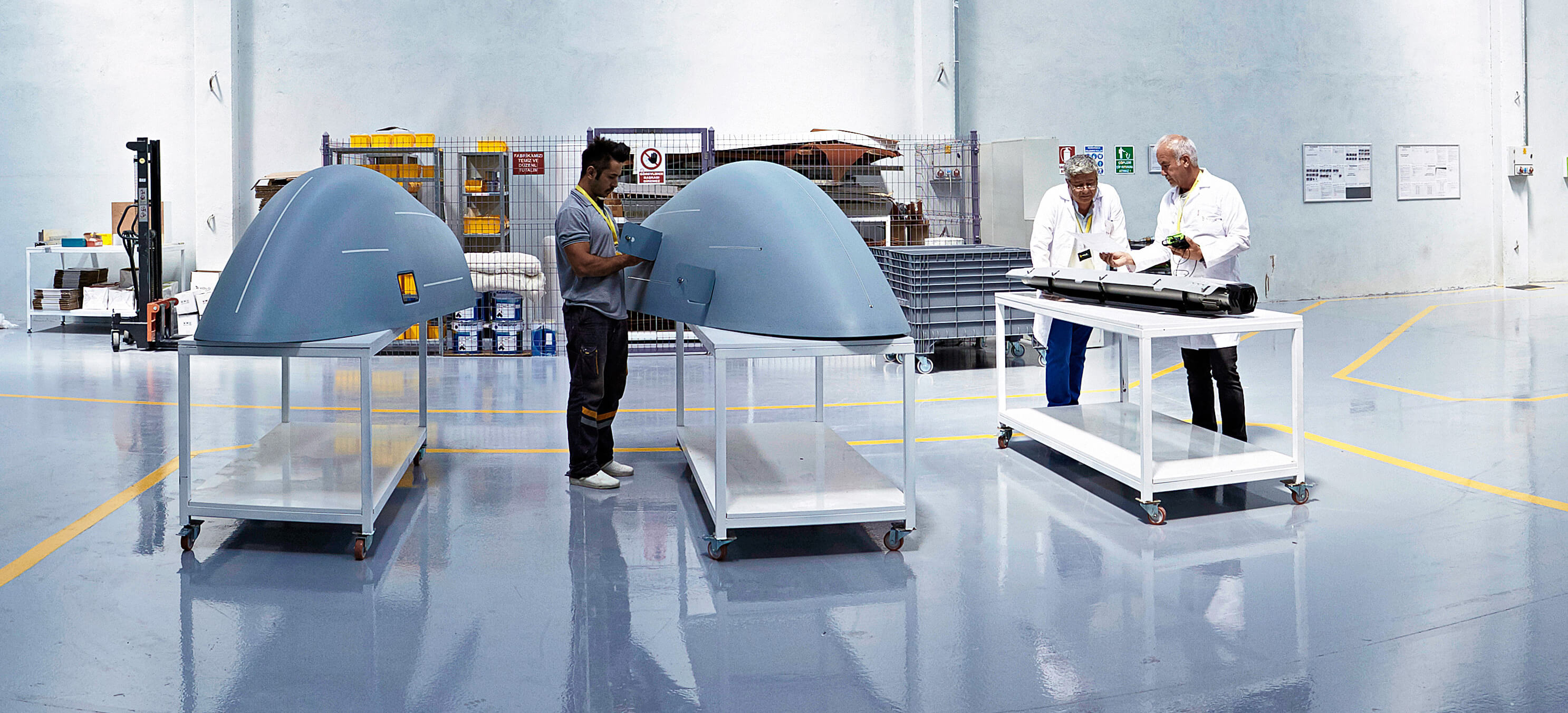There are different types of radars, all for different purposes, on an aircraft. And all of them require an airborne radome to protect the essential equipment. To understand the importance of an airborne radome, let’s take a look at what they protect first.
What is a radar? (Airborne Radomes)
Radar is an abbreviation for Radio Detection And Ranging. It was first developed and introduced during World War II.
Radar is an electronic device that detects the presence of objects by detecting reflected electromagnetic energy (that is protected by an airborne radome of course). Electromagnetic energy travels through air at a constant speed, approximately 300,000 km/s. By measuring the running time of the transmitted pulses, the distance between the reflecting objects and the radar site can be determined.
A radar system can measure the direction, altitude, distance, course, and speed of these objects under certain conditions.
The frequency of electromagnetic energy used for radar is unaffected by darkness and enters fog and clouds as well. This enables radar systems to determine the location of aircraft, ships, or other obstacles that are inaccessible to the naked eye due to distance, darkness, or weather.

Radar works in the same way that an echo does. The ability of bats to navigate without sight by using the reflected echoes of their cries to determine the location of obstacles is an excellent example of this echo principle in nature.
Similarly, in its most basic form, electromagnetic energy emitted by a radar system is reflected back to a receiver after striking a reflective object (called a target).
Types of radars on airplanes (Airborne Radomes)
Weather radar: A weather radar system in an aircraft is used to detect whether targets (clouds) have moisture. High moisture or rainfall rates are usually associated with turbulence, so avoid flying through these areas if possible. The weather radar system makes this possible. The antenna emits a pulsed beam, and the clouds reflect some of it back. As part of the EHSI, these returning beams provide a visual display on a colored display. The colors represent the density of the cloud.
The radio altimeter: Calculates the vertical distance between the plane and the ground. The radio altitude is displayed on the display units in the flight compartment (DU). The radio altitude is calculated by comparing the transmitted and received signals with the receiver-transmitter unit. The receiver-transmitter unit sends a radio signal and then receives the reflected RF signal from the ground to determine the aircraft’s altitude.
Doppler navigation: A self-contained aircraft navigation system is Doppler navigation. This navigation method is mostly used in rotary-wing aircraft. It was also used for several years in fixed-wing aircraft before being replaced by global positioning system (GPS) navigation.

All these radars require different radomes
An airborne radome are an important part of flight safety. They protect the radar, which provides weather information to the pilot, allowing them to make the best route decision for passenger safety.
This may entail deviating from the path for hundreds of miles in order to avoid severe weather conditions. If the radar’s information is compromised, it can jeopardize aircraft safety and fuel consumption.
We at Volo Radome, design and build different airborne radome for different airborne radars to ensure the safety of the aircraft. Feel free to reach us for your aviation radome needs. other radomes: aerospace radome

